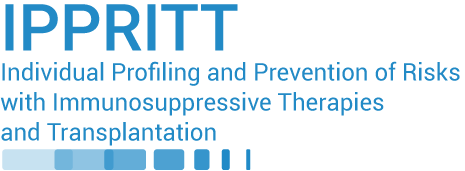Adverse events associated with currently used medical treatments for cystinuria and treatment goals: results from a series of 442 patients in France
Abstract
Objective: To evaluate medical treatments, in terms of adverse events (AEs) and therapeutic goals, in a large series of patients with cystinuria.
Patients and methods: Data from 442 patients with cystinuria were recorded retrospectively. Crystalluria was studied in 89 patients. A mixed-effects logistic regression model was used to estimate how urine pH, specific gravity and cysteine-binding thiols (CBT) correlate with risk of cystine crystalluria.
Results: Alkalizing agents and CBT agents were given to 88.8% (n = 381) and 55.3% ( = 238) of patients, respectively. Gastrointestinal AEs were reported in 12.3%, 10.4% and 2.6% of patients treated with potassium bicarbonate, potassium citrate and sodium bicarbonate, respectively (P = 0.008). The percentages of patients who experienced at least one AE with tiopronin (24.6%) and with D-penicillamine (29.5%) were similar (P = 0.45). Increasing urine pH and decreasing urine specific gravity significantly reduced the risk of cystine crystalluria, whereas D-penicillamine and tiopronin treatments did not reduce this risk (odds ratio [OR] 1 for pH ≤ 6.5; OR 0.52 [95% confidence interval {95% CI} 0.28–0.95] for 7.0 8.0, P <0.001).
Conclusion: Adverse events were frequent with D-penicillamine and tiopronin. Alkaline hyperdiuresis was well tolerated and reduced cystine crystalluria. Urine specific gravity ≤ 1.005 and urine pH >7.5, while warning about calcium-phosphate crystallization, should be the goals of medical therapy.
Patients and methods: Data from 442 patients with cystinuria were recorded retrospectively. Crystalluria was studied in 89 patients. A mixed-effects logistic regression model was used to estimate how urine pH, specific gravity and cysteine-binding thiols (CBT) correlate with risk of cystine crystalluria.
Results: Alkalizing agents and CBT agents were given to 88.8% (n = 381) and 55.3% ( = 238) of patients, respectively. Gastrointestinal AEs were reported in 12.3%, 10.4% and 2.6% of patients treated with potassium bicarbonate, potassium citrate and sodium bicarbonate, respectively (P = 0.008). The percentages of patients who experienced at least one AE with tiopronin (24.6%) and with D-penicillamine (29.5%) were similar (P = 0.45). Increasing urine pH and decreasing urine specific gravity significantly reduced the risk of cystine crystalluria, whereas D-penicillamine and tiopronin treatments did not reduce this risk (odds ratio [OR] 1 for pH ≤ 6.5; OR 0.52 [95% confidence interval {95% CI} 0.28–0.95] for 7.0 8.0, P <0.001).
Conclusion: Adverse events were frequent with D-penicillamine and tiopronin. Alkaline hyperdiuresis was well tolerated and reduced cystine crystalluria. Urine specific gravity ≤ 1.005 and urine pH >7.5, while warning about calcium-phosphate crystallization, should be the goals of medical therapy.
Domains
Genomics [q-bio.GN]
Fichier principal
 BJU International - 2019 - Prot‐Bertoye - Adverse events associated with currently used medical treatments for cystinuria.pdf (606.58 Ko)
Télécharger le fichier
BJU International - 2019 - Prot‐Bertoye - Adverse events associated with currently used medical treatments for cystinuria.pdf (606.58 Ko)
Télécharger le fichier
| Origin | Files produced by the author(s) |
|---|---|
| licence |





